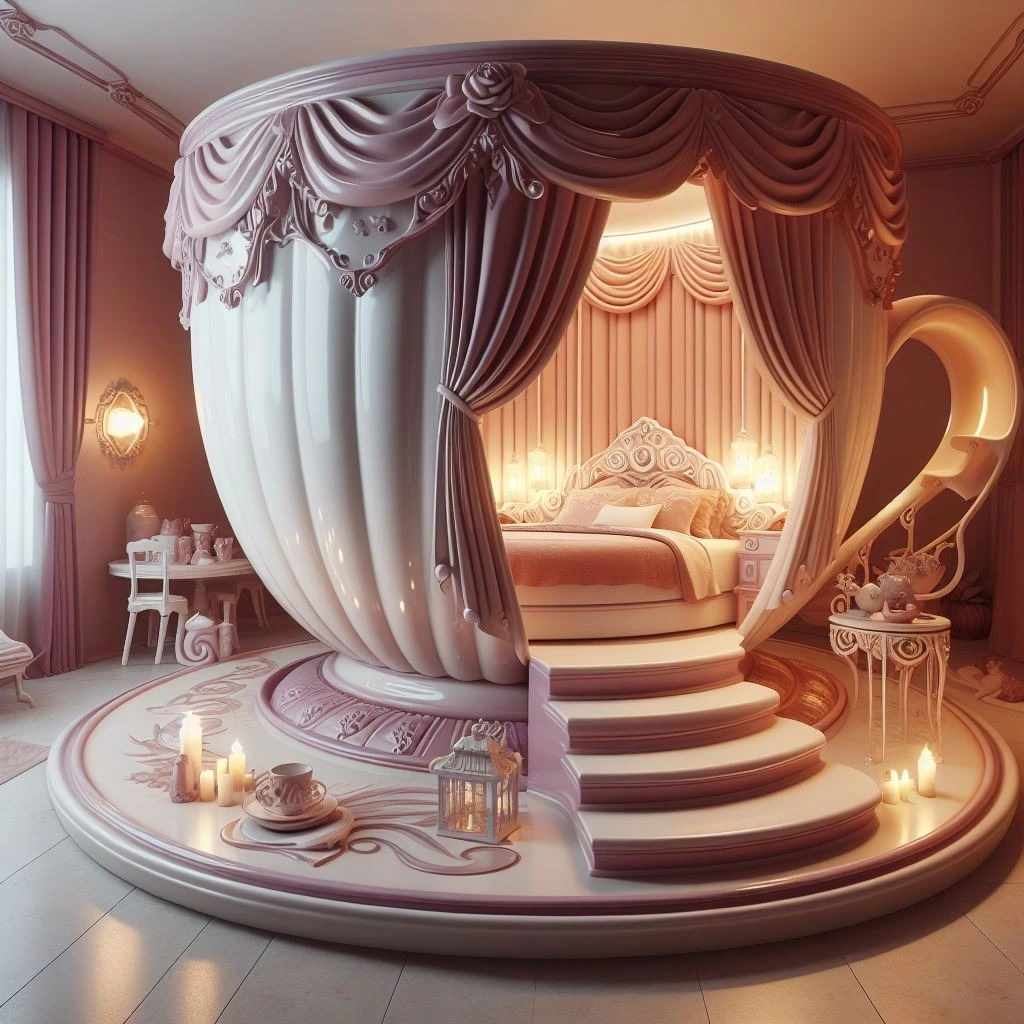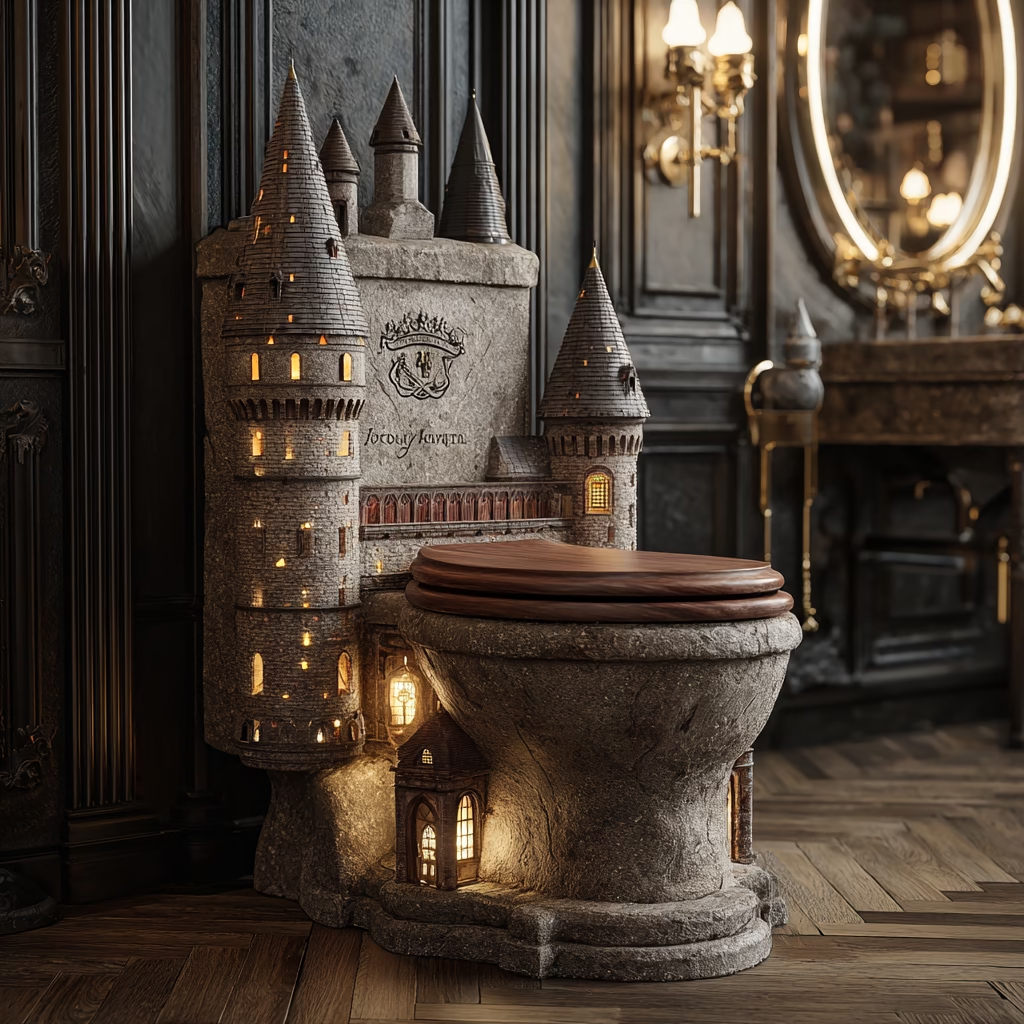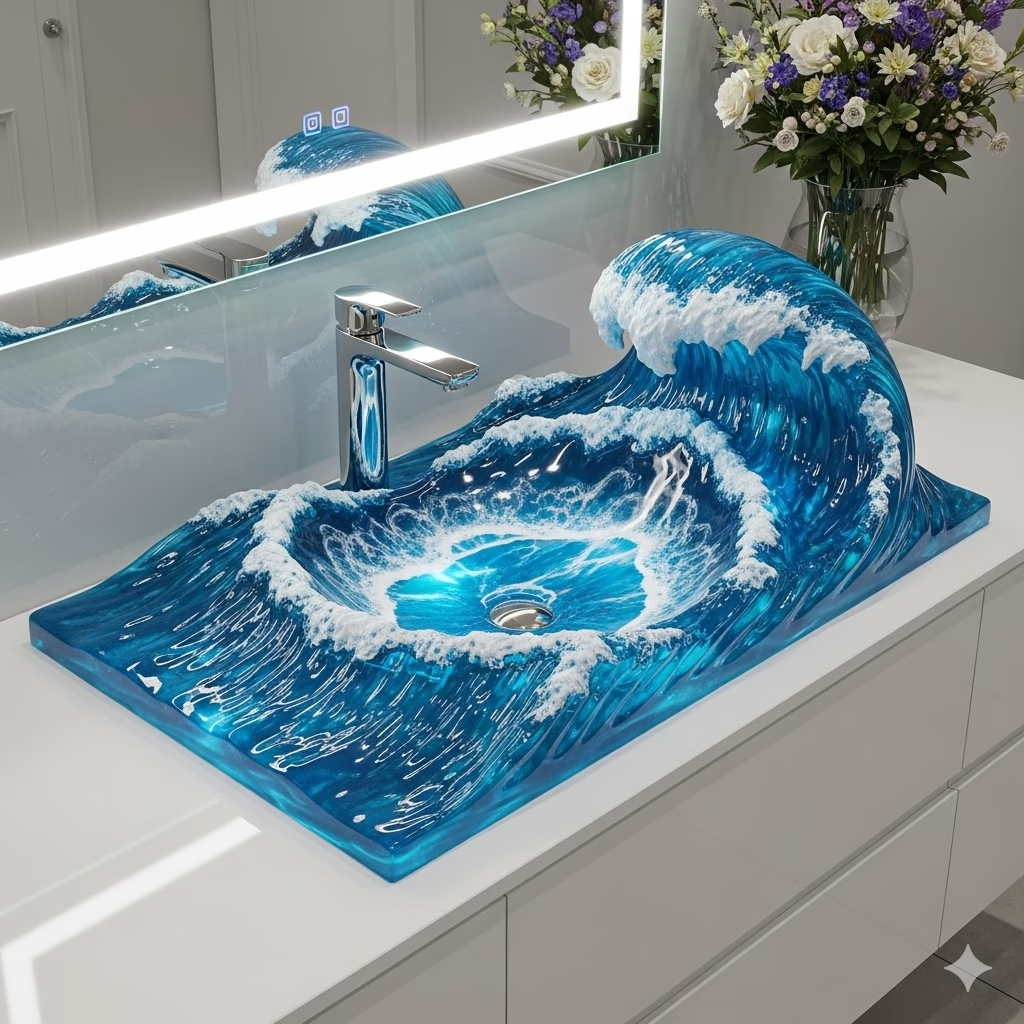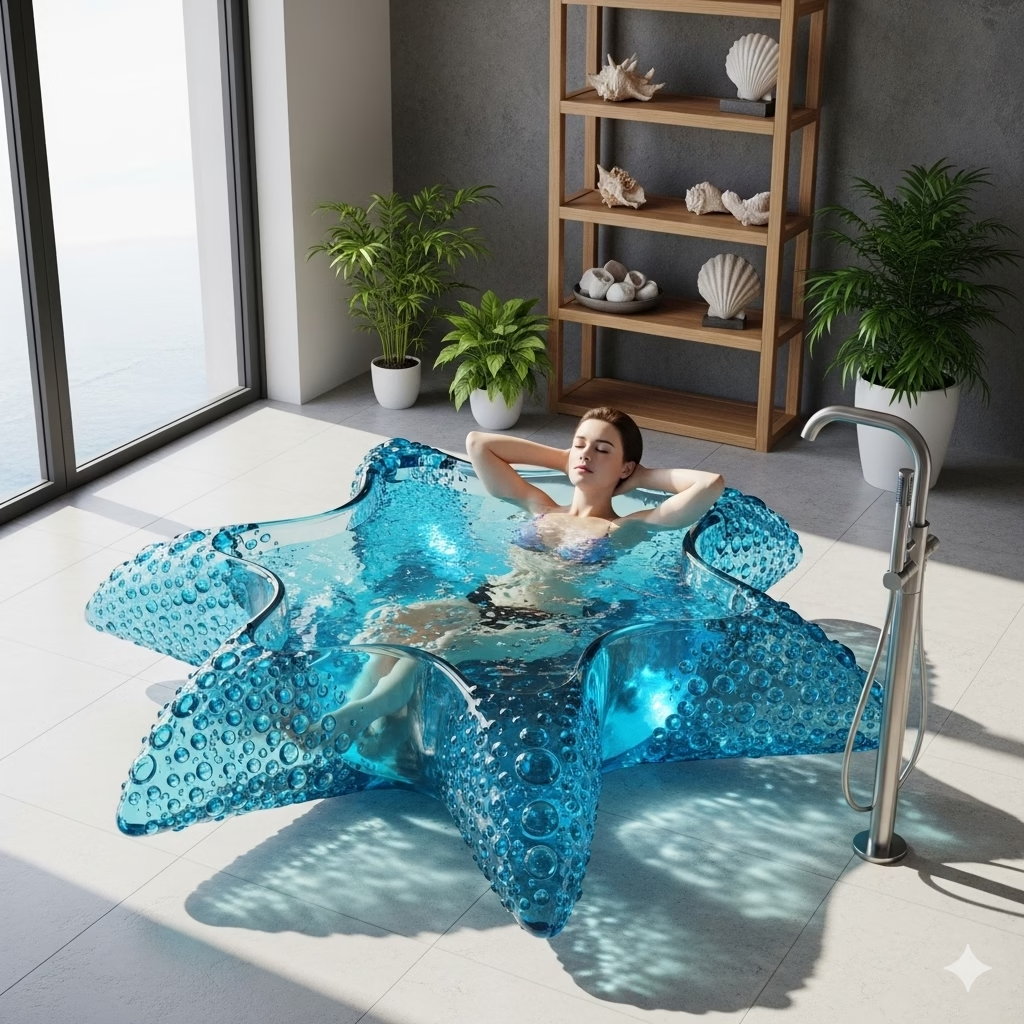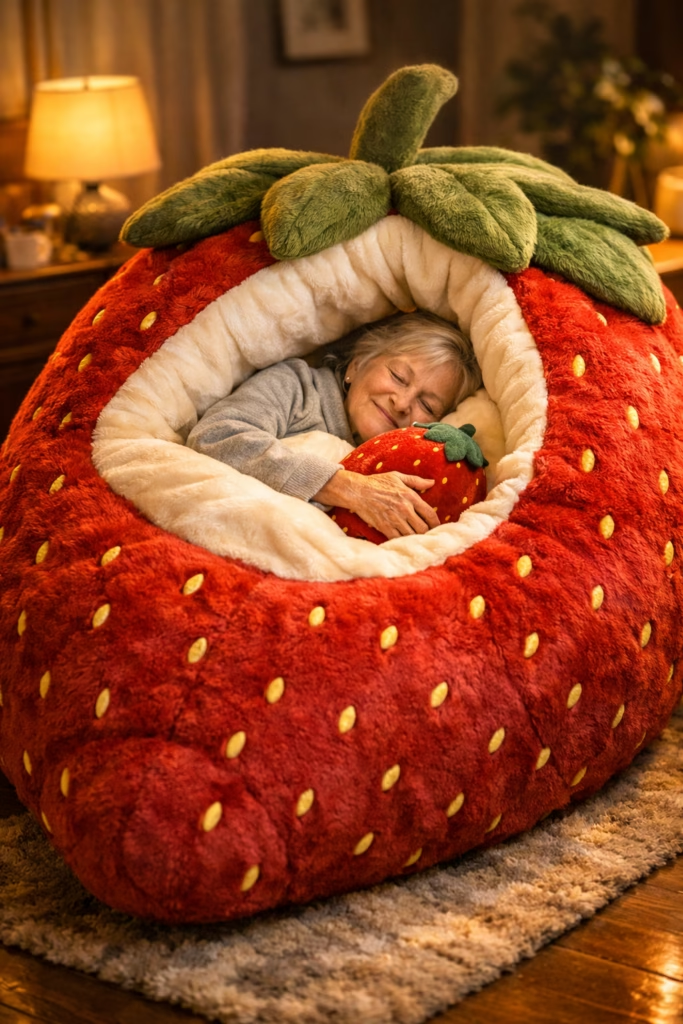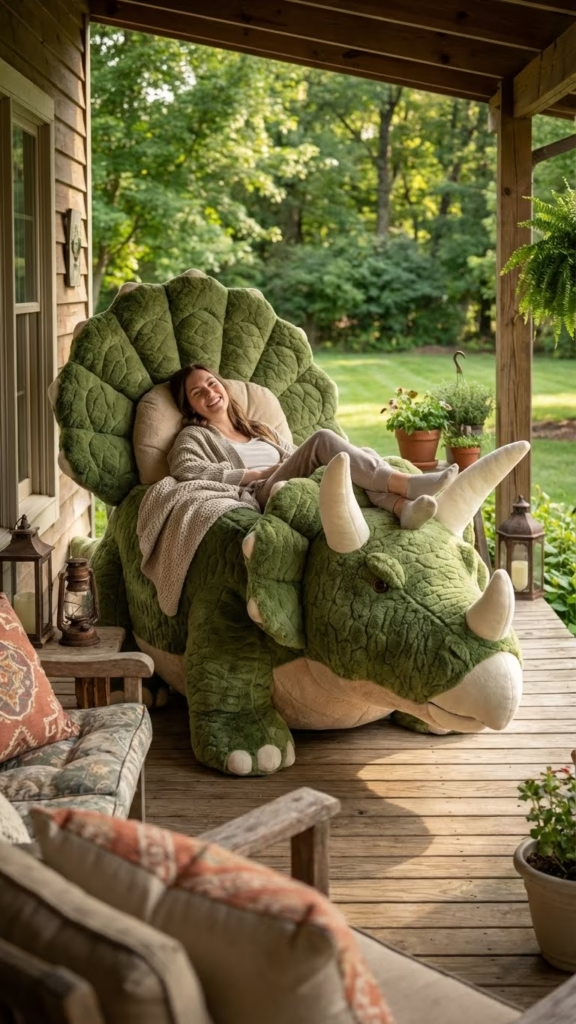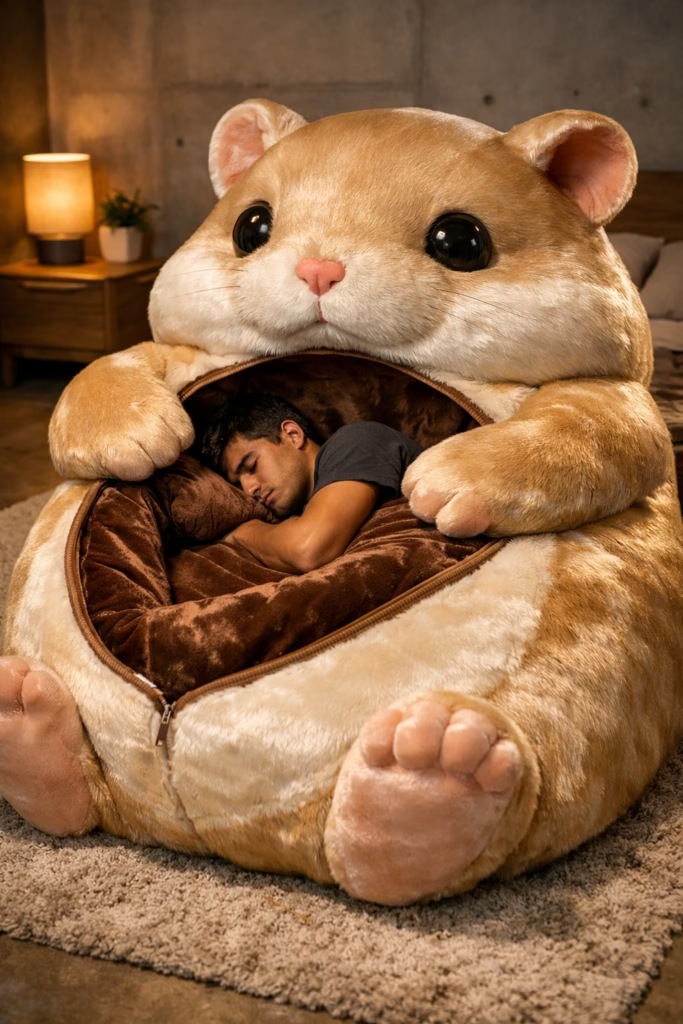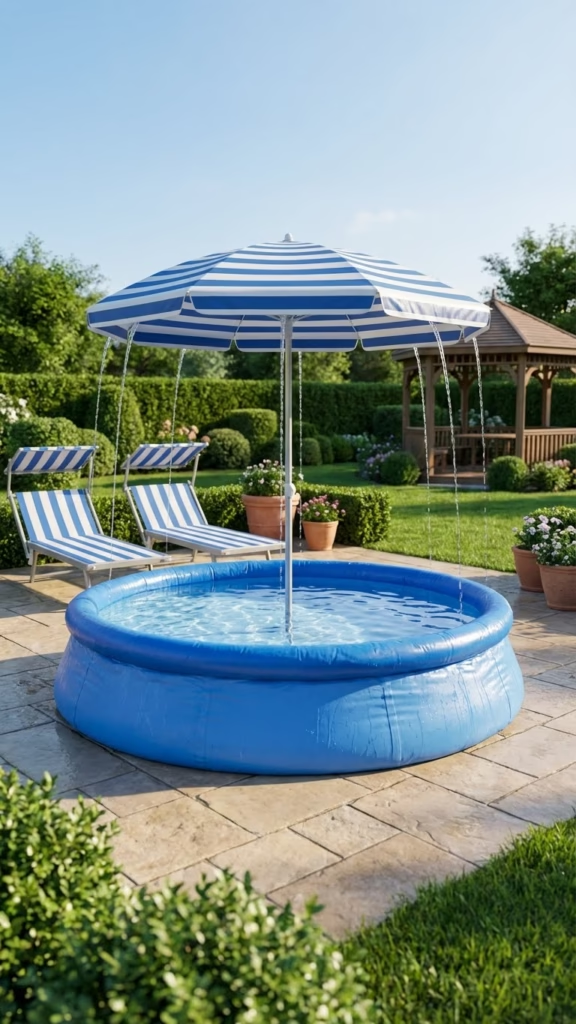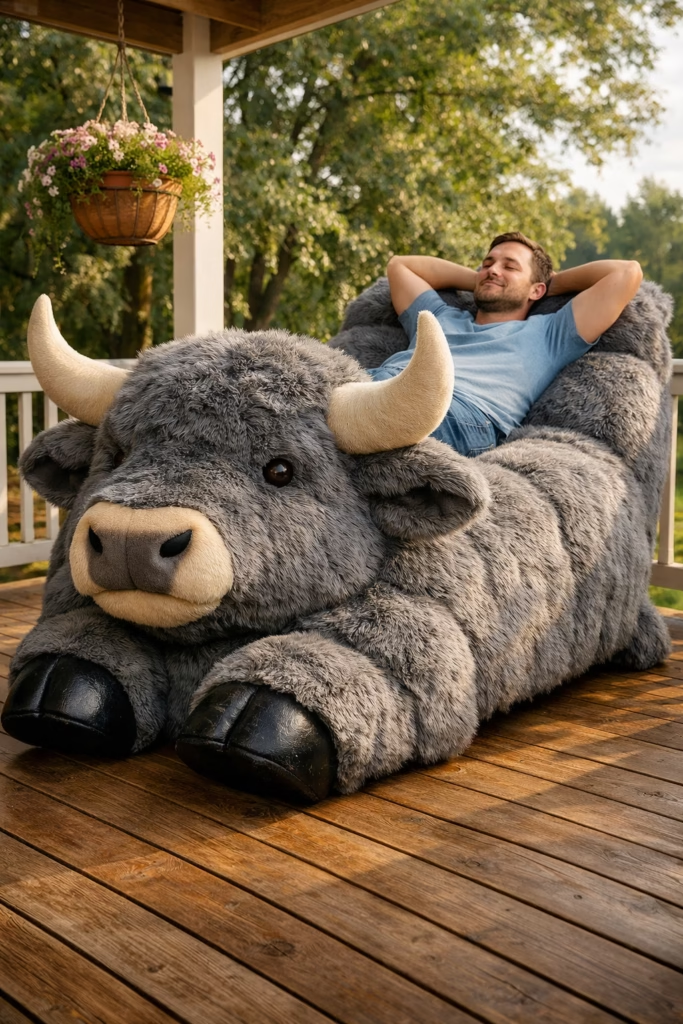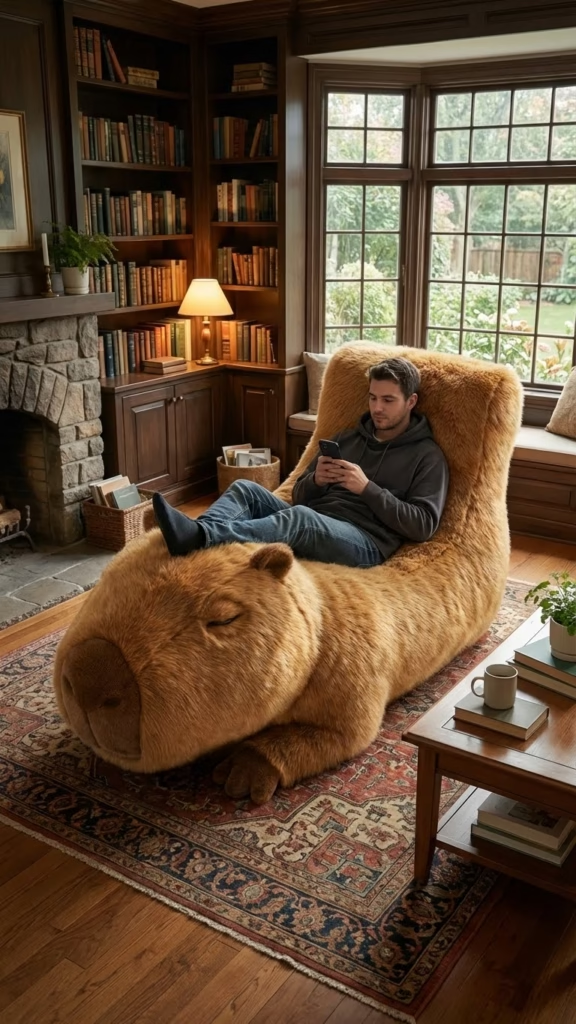In a world where comfort and charm intertwine, the notion of a “teacup bed” conjures images of whimsy and tranquility. While the term may initially evoke visions of miniature beds nestled within delicate tea cups, its reality is far more enchanting. A teacup bed is a unique concept in the realm of interior design, offering a cozy retreat that marries elegance with practicality. In this article, we delve into the essence of the teacup bed, exploring its origins, design elements, and the serene ambiance it brings to any space.
Origins of the Tea Cup Bed
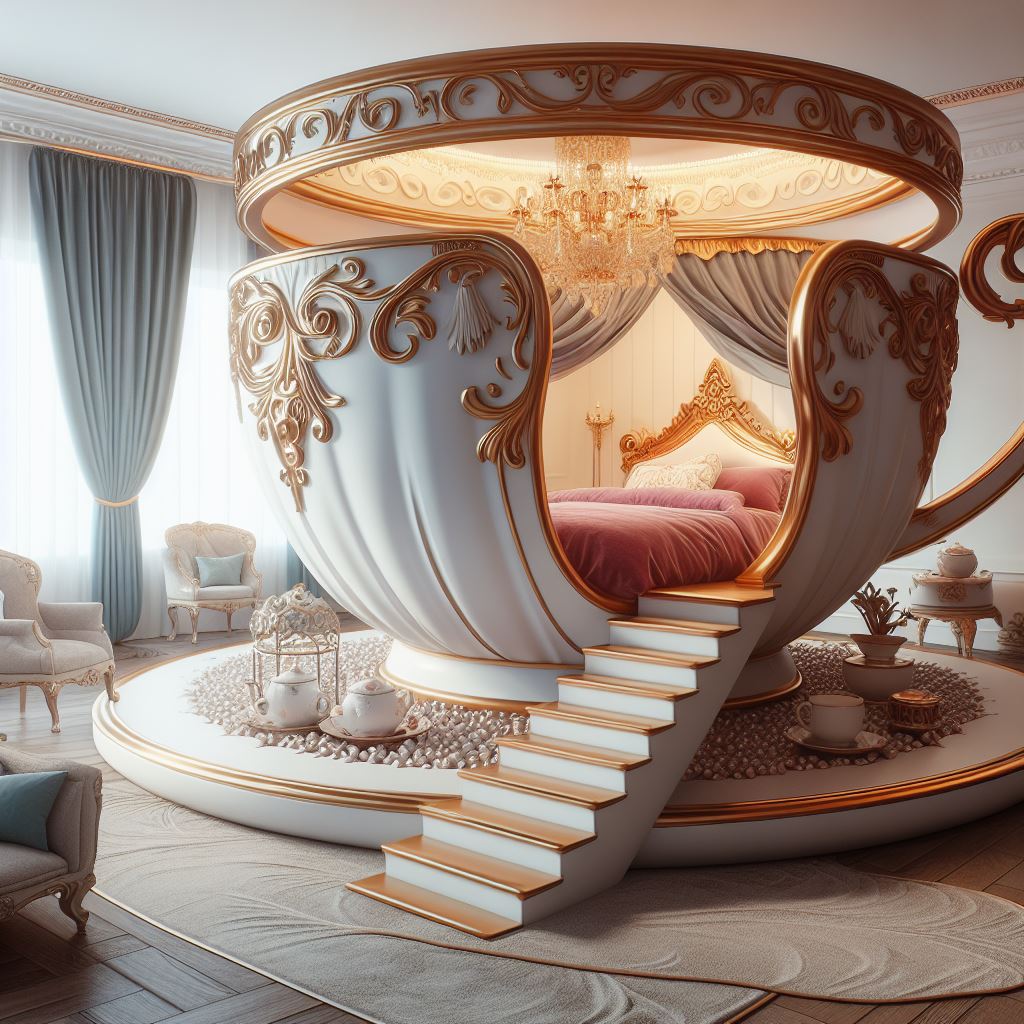
The origin of the teacup bed traces back to the fusion of Eastern and Western design influences. It finds its roots in the Japanese practice of “Wabi-Sabi,” which cherishes imperfection and simplicity. This aesthetic philosophy celebrates the beauty of asymmetry and embraces natural materials, reflecting the essence of tranquility and harmony. Additionally, the concept draws inspiration from the English tradition of afternoon tea, where comfort and elegance converge in a ritual of relaxation.
Design Elements
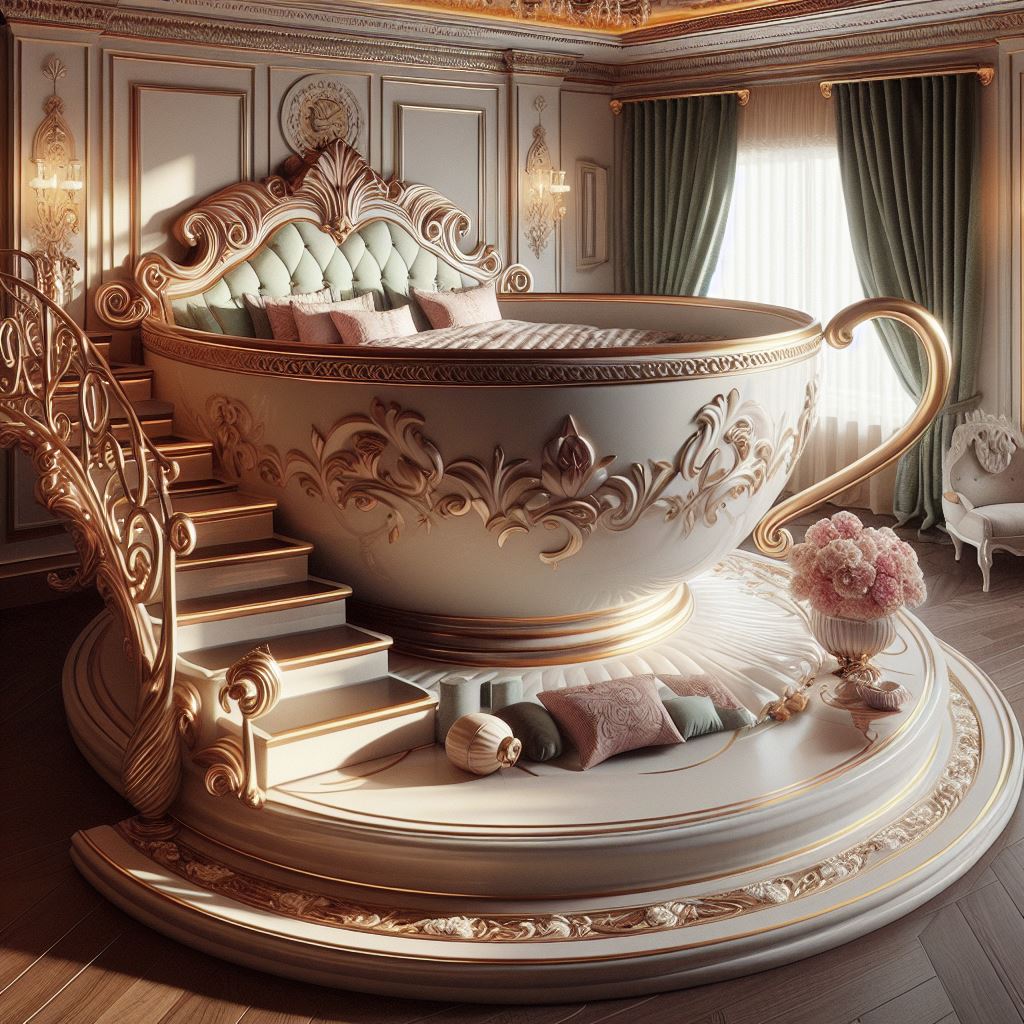
A tea cup bed embodies a blend of quaint charm and practical design. Its structure typically features a low-profile frame with gently curved edges, reminiscent of the graceful lines of a teacup. The headboard often takes center stage, adorned with intricate carvings or upholstered in luxurious fabrics, evoking a sense of opulence and refinement. The choice of materials, such as reclaimed wood or wrought iron, adds to the rustic appeal of the bed, while soft linens and plush pillows invite indulgent repose.
Creating a Serene Ambiance
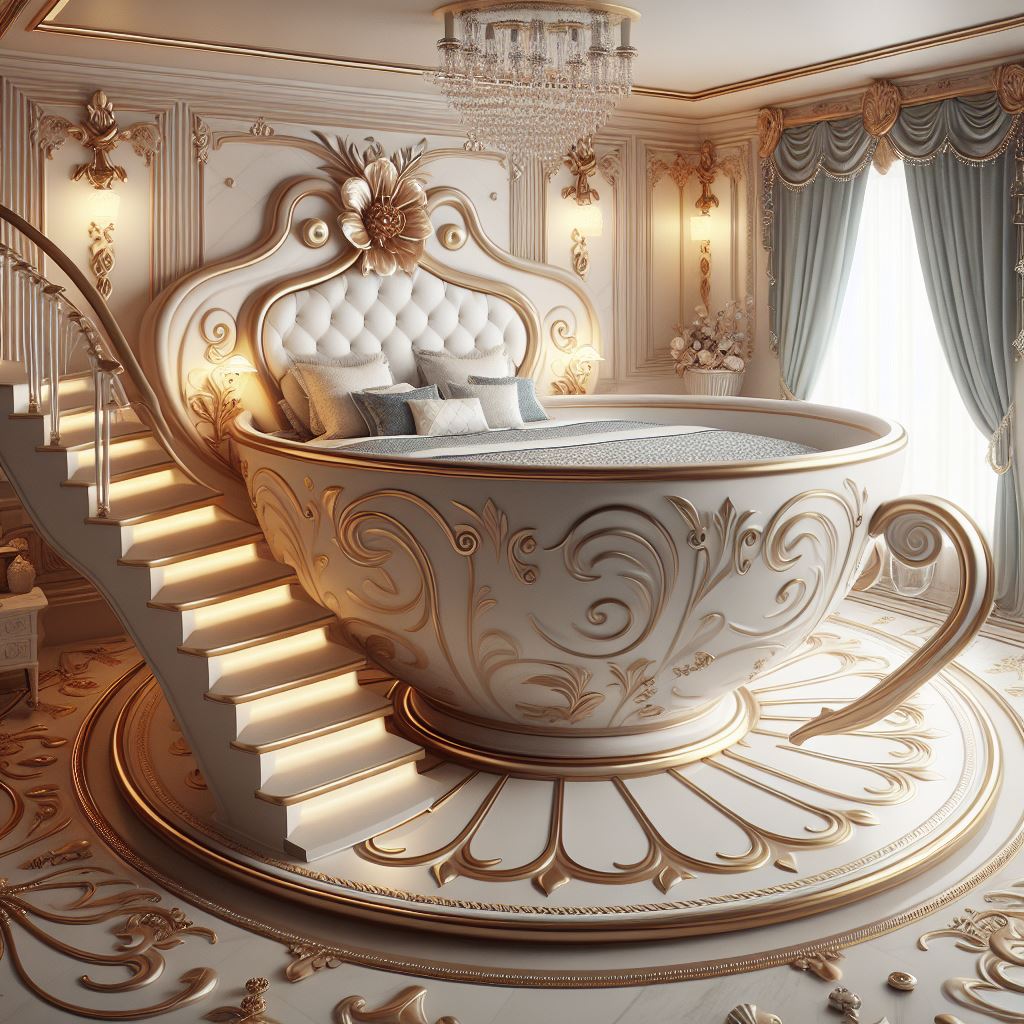
Beyond its aesthetic allure, a teacup bed fosters a serene ambiance that promotes relaxation and rejuvenation. Positioned in a sunlit corner or nestled beneath a canopy of foliage, it becomes a sanctuary of solace amidst the bustle of daily life. The gentle sway of curtains, the soft glow of ambient lighting, and the subtle fragrance of freshly brewed tea converge to create an atmosphere of tranquility. It is a space where one can unwind, reflect, and find solace in the simple pleasures of life.
Incorporating Personal Touches
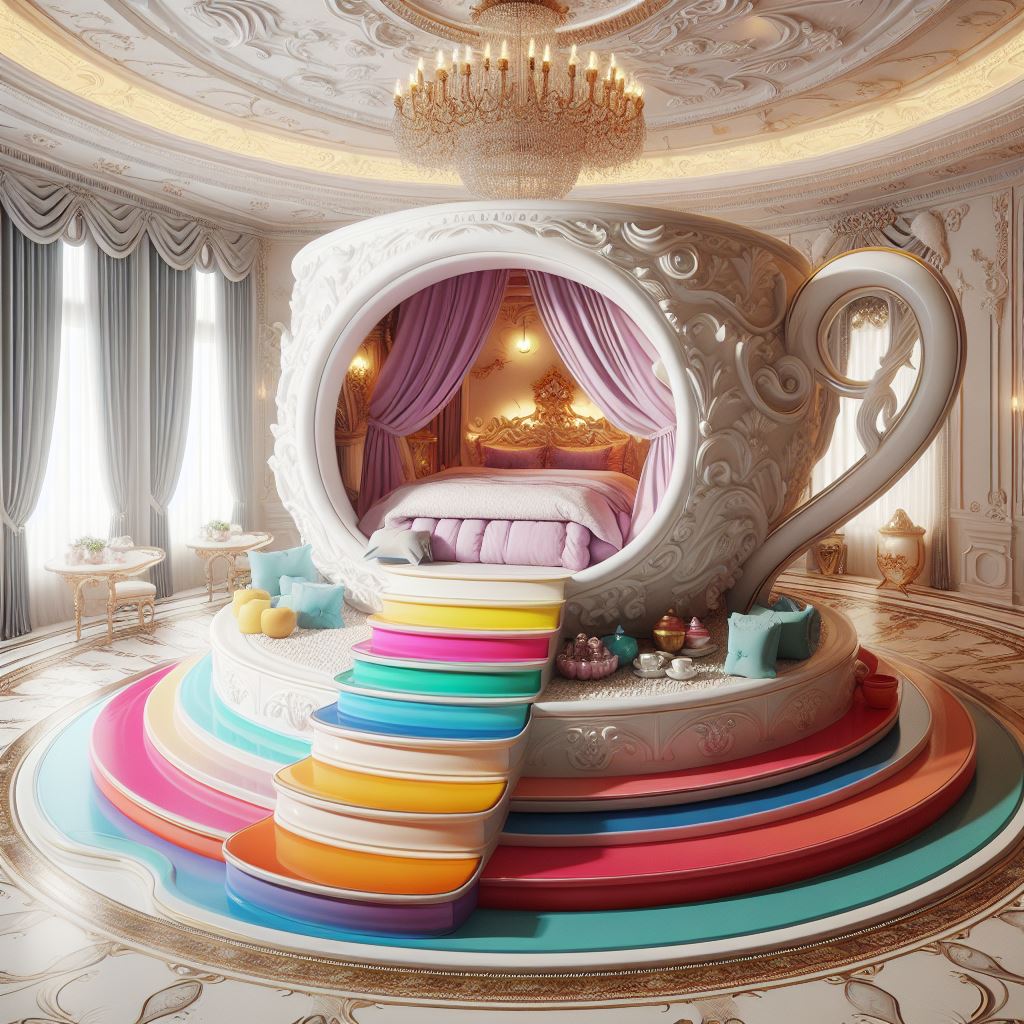
One of the defining features of a tea cup bed is its versatility in accommodating personal style and preferences. Whether adorned with heirloom quilts, adorned with hand-painted motifs, or adorned with vintage trinkets, each bed tells a unique story of its owner’s tastes and experiences. The addition of botanical accents, such as potted plants or floral arrangements, infuses the space with vitality and charm. A teacup bed transcends mere furniture to become a cherished sanctuary of self-expression by curating a space that reflects one’s personality and passions.
Evolution of the Tea Cup Bed
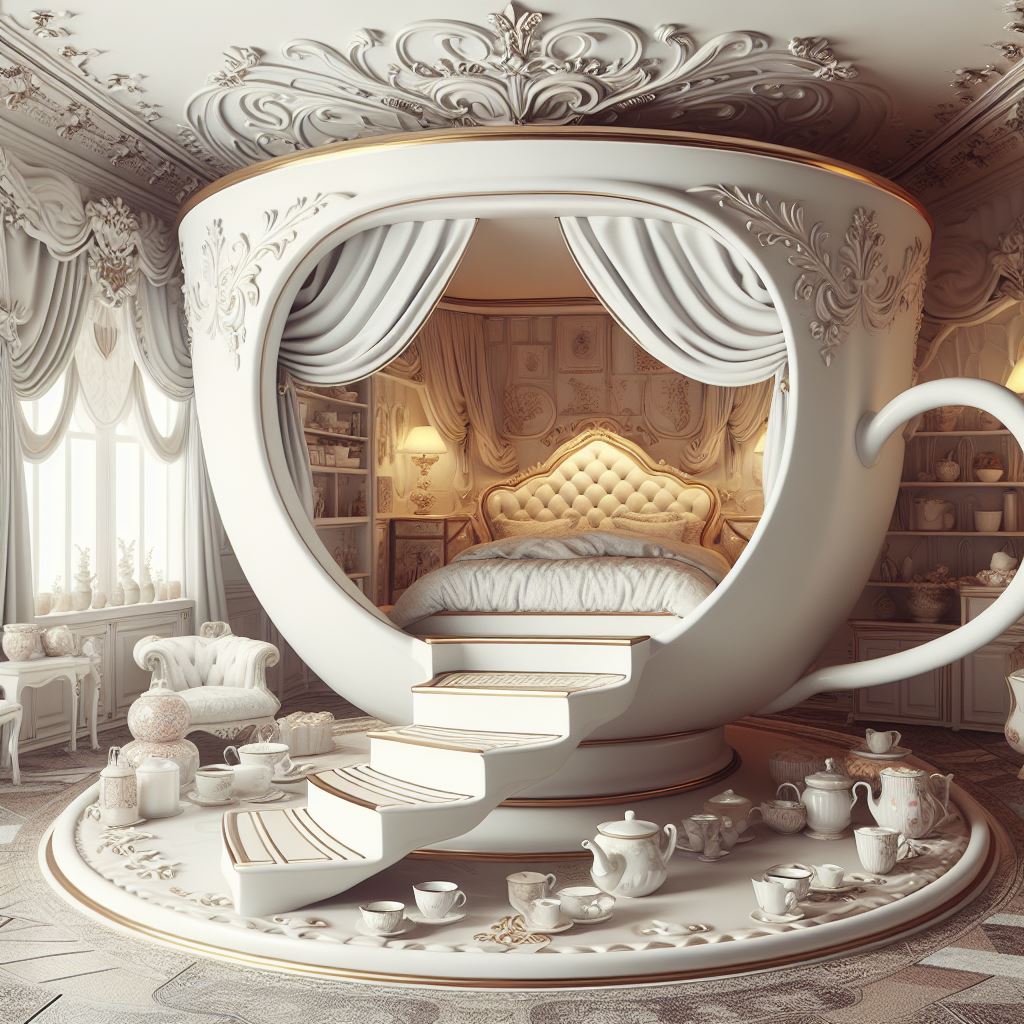
As with any concept rooted in design and aesthetics, the tea cup bed has evolved, adapting to changing tastes and trends while retaining its essence. In recent years, there has been a resurgence of interest in minimalist and sustainable living, prompting a renewed appreciation for the simplicity and elegance of the tea cup bed. Designers and artisans alike have embraced the challenge of reinterpreting this timeless piece of furniture, infusing it with modern sensibilities and eco-friendly materials.
Innovative Materials and Techniques
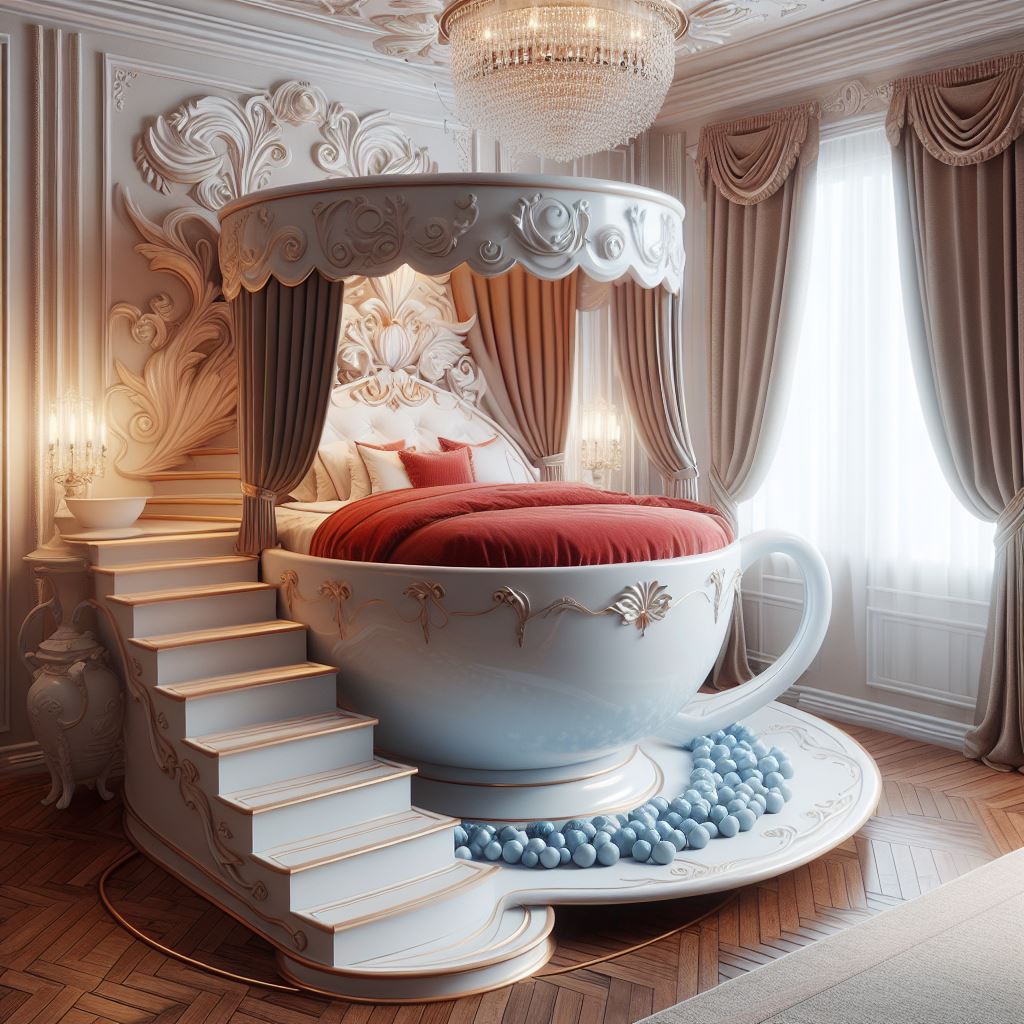
In the quest for sustainability and innovation, designers have begun experimenting with unconventional materials and techniques to craft tea cup beds that are both stylish and eco-conscious. From bamboo and rattan to recycled wood and metal, the range of materials used in constructing tea cup beds has expanded to encompass a variety of textures and finishes. Similarly, advancements in manufacturing processes, such as 3D printing and CNC machining, have enabled the creation of intricate designs and bespoke details that were once unimaginable.
Adapting to Changing Lifestyles
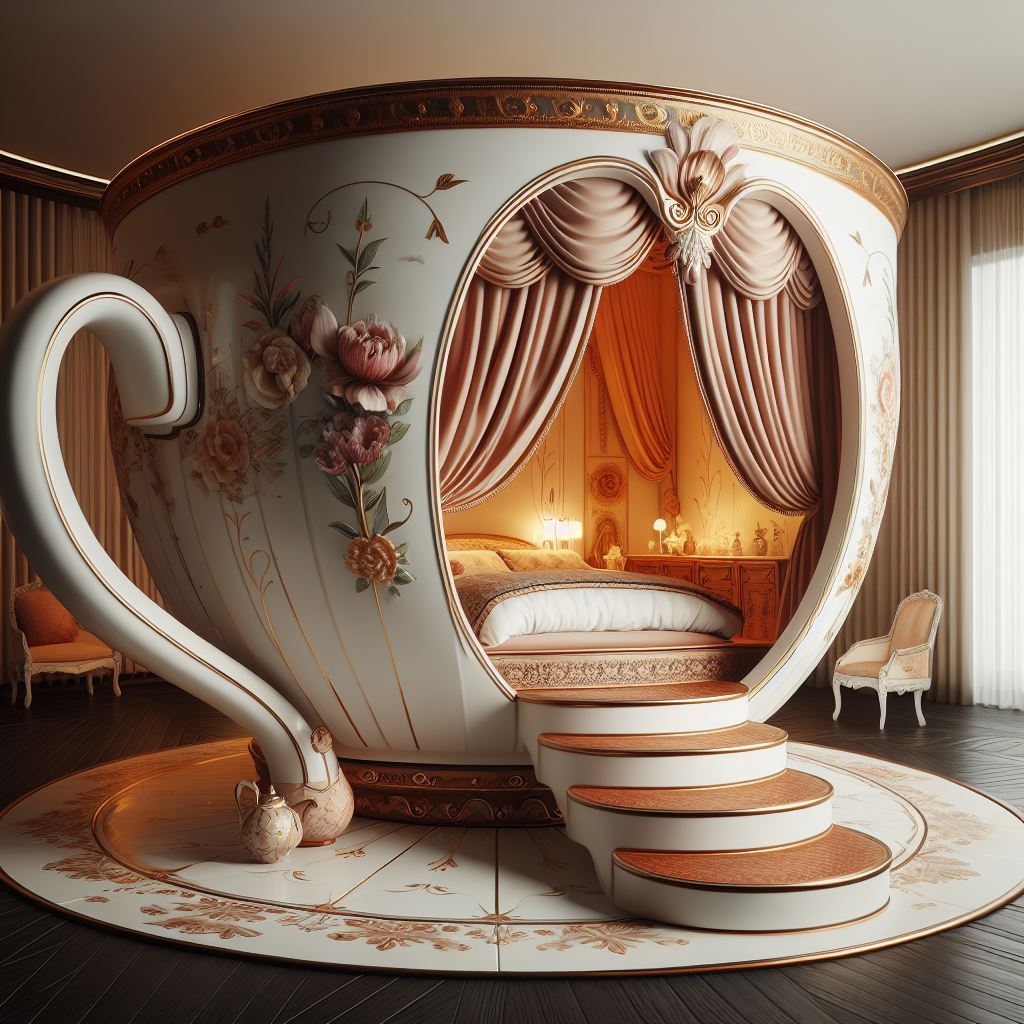
In an era defined by flexibility and mobility, the tea cup bed has emerged as a versatile solution for modern living spaces. Its compact footprint makes it ideal for urban dwellings and smaller homes where space is at a premium. Moreover, its lightweight construction and modular design allow for easy assembly and disassembly, catering to the nomadic lifestyle of today’s generation. Whether used as a primary bed or a guest accommodation, the tea cup bed offers a practical and stylish solution for urbanites seeking comfort and convenience.
Cultural Influence and Global Appeal
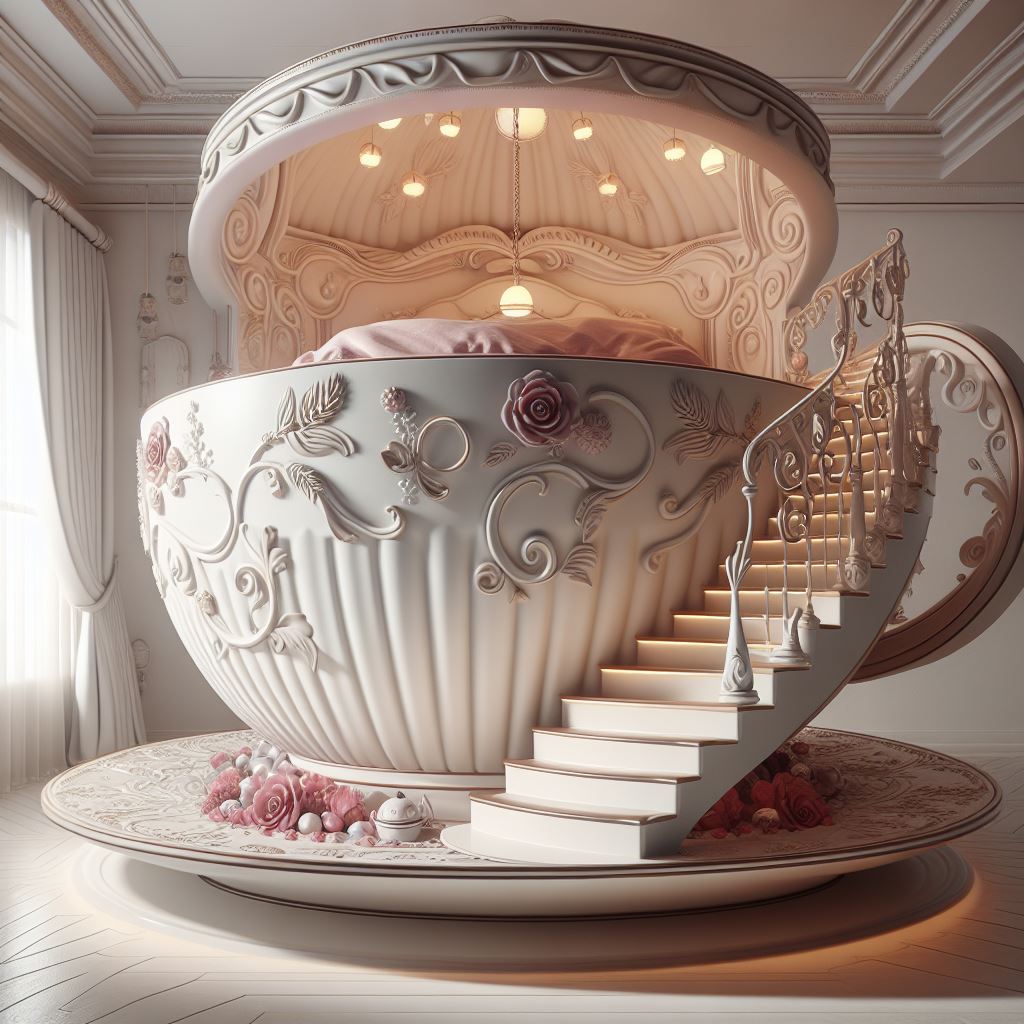
While the origins of the tea cup bed may be rooted in Eastern and Western design traditions, its appeal transcends geographical boundaries and cultural differences. In countries around the world, from Japan to Italy to the United States, the tea cup bed has found admirers who appreciate its unique blend of aesthetics and functionality. Its ability to evoke a sense of nostalgia and nostalgia, reminiscent of childhood tea parties and lazy Sunday mornings, resonates with people of all ages and backgrounds.
Embracing the Hygge Lifestyle
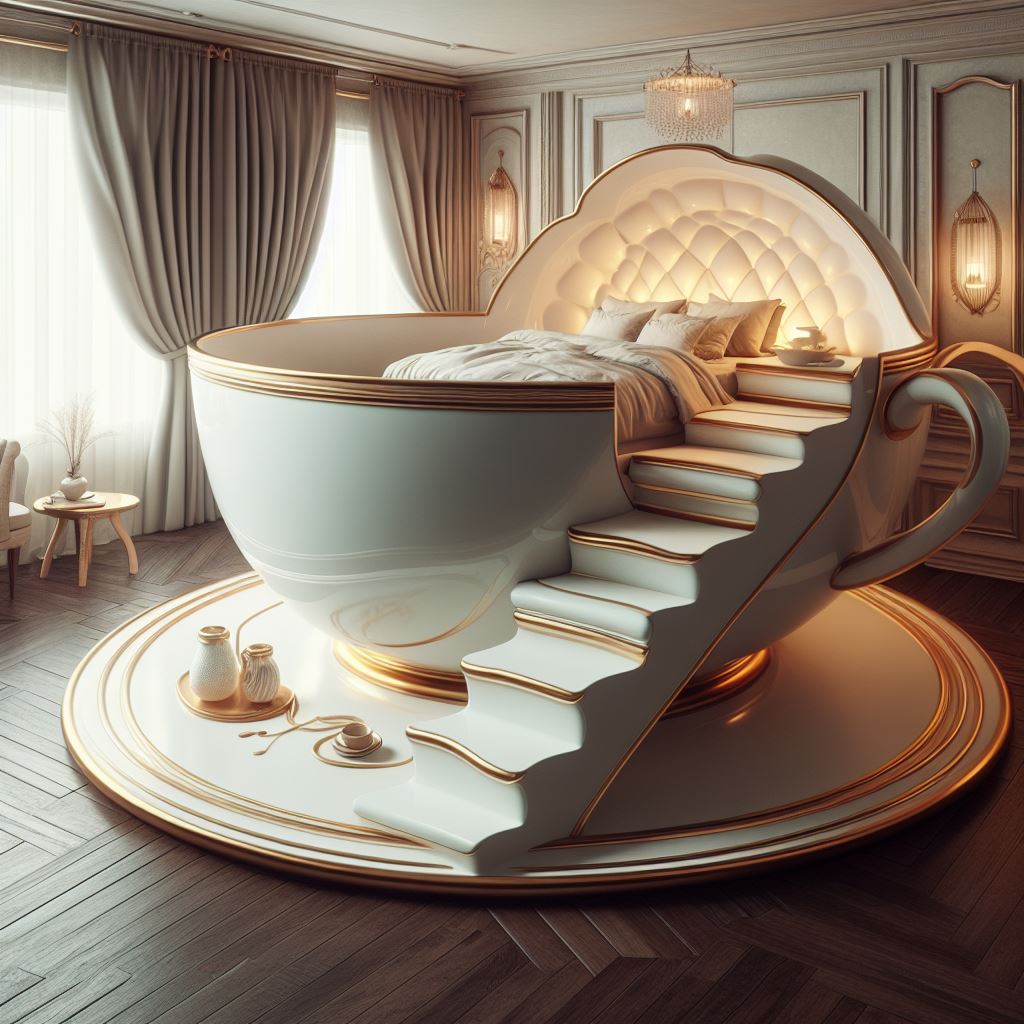
Central to the allure of the tea cup bed is its embodiment of the Danish concept of “hygge” – a feeling of coziness, contentment, and well-being derived from simple pleasures. In today’s fast-paced society, where stress and anxiety abound, the tea cup bed offers a haven of hygge, where one can escape the pressures of the outside world and embrace the warmth of home. With its soft linens, muted colors, and intimate scale, it fosters a sense of intimacy and belonging that is essential for mental and emotional well-being.
The Future of Tea Cup Beds
As we look to the future, the tea cup bed holds promise as a symbol of sustainable luxury and mindful living. With advancements in eco-friendly materials and digital fabrication techniques, it is poised to become even more accessible and customizable, catering to the diverse needs and tastes of consumers worldwide. Moreover, as society continues to prioritize comfort and well-being, the tea cup bed will remain a cherished sanctuary, offering respite from the chaos of the world and inviting us to embrace the simple pleasures of life.
Challenges and Solutions in Tea Cup Bed Design
While the concept of a tea cup bed may seem straightforward, its design and implementation pose several challenges that designers must address. One of the primary concerns is ensuring structural integrity and stability while maintaining the bed’s aesthetic appeal. The low-profile frame and curved edges characteristic of tea cup beds require careful engineering to support the weight of the mattress and occupants without sacrificing elegance or comfort. Designers must also consider factors such as mattress thickness, support slat spacing, and material strength to create a bed that is both functional and visually pleasing.
Another challenge in tea cup bed design is balancing tradition with innovation. While the timeless appeal of classic tea cup beds is undeniable, contemporary consumers often seek designs that reflect their individuality and lifestyle. This has led to a proliferation of modern interpretations of the tea cup bed, incorporating elements such as built-in storage, adjustable headrests, and integrated lighting. By blending traditional craftsmanship with innovative features, designers can create tea cup beds that appeal to a wide range of tastes and preferences.
Customization and Personalization
In an era of mass production and standardized design, the ability to customize and personalize products has become increasingly important to consumers. Tea cup beds offer ample opportunities for customization, allowing individuals to tailor their beds to suit their unique needs and aesthetic preferences. From choosing the type of wood and finish to selecting upholstery fabrics and decorative accents, the possibilities for customization are virtually limitless. This not only allows consumers to create a bed that reflects their style but also fosters a sense of ownership and connection to the product.
Environmental Sustainability
In recent years, there has been a growing awareness of the environmental impact of consumer products, prompting many manufacturers to prioritize sustainability in their design and production processes. Tea cup beds present unique opportunities for incorporating eco-friendly materials and practices into furniture design. By using responsibly sourced wood, recycled metals, and non-toxic finishes, designers can create tea cup beds that are both aesthetically pleasing and environmentally sustainable. Additionally, by designing beds that are durable, long-lasting, and easy to disassemble and recycle, manufacturers can minimize waste and reduce the carbon footprint of their products.
Consumer Education and Awareness
Despite the growing popularity of tea cup beds, many consumers may still be unfamiliar with the concept or unsure of how to incorporate it into their homes. As such, there is a need for greater consumer education and awareness surrounding tea cup beds, including their benefits, design options, and practical considerations. Manufacturers and retailers can play a key role in this regard by providing informative resources, such as online guides, design consultations, and interactive tools, to help consumers make informed decisions about their furniture purchases. By demystifying the tea cup bed and highlighting its unique features and advantages, manufacturers can expand the market for this innovative and charming piece of furniture.
Conclusion
In conclusion, the tea cup bed represents a delightful marriage of tradition and innovation, offering a cozy and stylish retreat for modern-day consumers. While its design and implementation pose certain challenges, such as structural integrity, customization, and environmental sustainability, these can be overcome through thoughtful engineering, creative ingenuity, and a commitment to excellence. By addressing these challenges and educating consumers about the benefits and possibilities of tea cup beds, manufacturers can ensure that this charming piece of furniture continues to captivate hearts and enhance homes for years to come. So, whether you’re sipping tea in a quaint cottage or lounging in a contemporary loft, let the tea cup bed be your refuge of comfort and style in a world filled with chaos and uncertainty.

